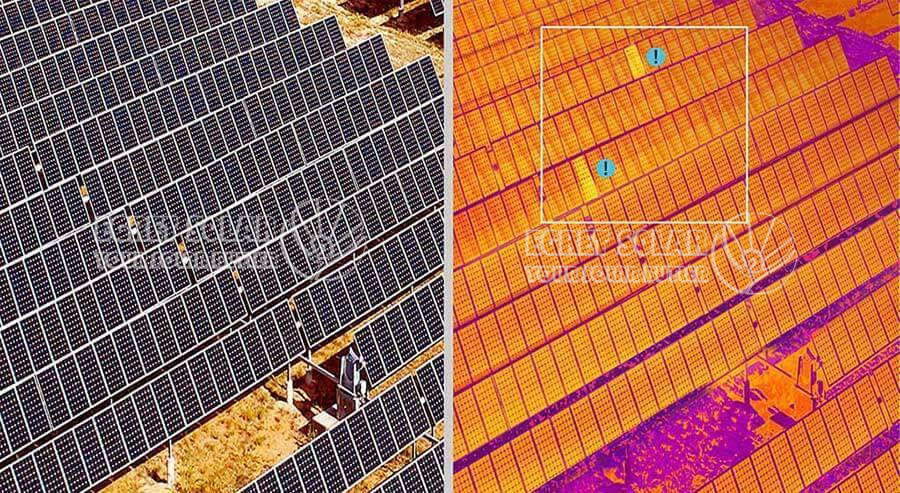- English
- Español
- Português
- русский
- Français
- 日本語
- Deutsch
- tiếng Việt
- Italiano
- Nederlands
- ภาษาไทย
- Polski
- 한국어
- Svenska
- magyar
- Malay
- বাংলা ভাষার
- Dansk
- Suomi
- हिन्दी
- Pilipino
- Türkçe
- Gaeilge
- العربية
- Indonesia
- Norsk
- تمل
- český
- ελληνικά
- український
- Javanese
- فارسی
- தமிழ்
- తెలుగు
- नेपाली
- Burmese
- български
- ລາວ
- Latine
- Қазақша
- Euskal
- Azərbaycan
- Slovenský jazyk
- Македонски
- Lietuvos
- Eesti Keel
- Română
- Slovenski
- मराठी
- Srpski језик
How do we detect the microcracks in photovoltaic (PV) modules?
The detection of microcracks in photovoltaic (PV) modules is primarily based on the appearance, electrical performance, and structural integrity of the modules, and can be comprehensively judged using a variety of methods. Here are some commonly used detection methods:
Visual Inspection:
Firstly, visually inspect the PV module to observe whether there are any obvious damages, scratches, cracks, etc., on the surface of the module.
For suspected areas of microcracks or other tools should be used for close observation to confirm the presence of microcracks.
While this method is straightforward, it can only detect more visible cracks and may not directly observe microscopic microcracks.

Electrical Performance Testing:
Measure the electrical performance parameters of the PV module, such as open-circuit voltage, short-circuit current, maximum power point voltage, and current, to determine if there are any performance anomalies.
Microcracks can increase the internal resistance of the module, thereby affecting its electrical performance.
This method can indirectly judge the existence of microcracks in the module but requires confirmation with other methods.
Infrared Thermography:
Utilize infrared thermography technology to scan the PV module and observe its temperature distribution.
Microcracks can hinder heat conduction within the module, resulting in abnormal temperature distribution patterns on the infrared thermal image.
By comparing and analyzing the infrared thermal images of normal and suspected microcracked modules, the presence of microcracks can be determined.

Electroluminescence (EL) Testing:
EL testing is an efficient and accurate method for detecting internal defects in PV modules.
By applying a certain voltage to the module, light emission occurs in defective areas, allowing the detection of microcracks, impurities, and other defects within the module.
EL testing boasts high sensitivity, fast detection speed, and intuitive results, making it a crucial method for detecting microcracks in PV modules.
Ultrasonic Testing:
Ultrasonic testing is a non-destructive method that involves emitting ultrasonic waves into the PV module and utilizing their reflection and propagation characteristics to detect microcracks.
This method can detect cracks invisible to the naked eye but may have limitations for smaller microcracks.
In practical applications, suitable detection methods can be selected based on specific circumstances, or multiple methods can be combined to comprehensively determine the presence of microcracks in the module. Additionally, to enhance the efficiency and accuracy of microcrack detection in PV modules, automated detection equipment and intelligent analysis systems can be employed to assist in the detection process.
It is essential to note that once microcracks are discovered in PV modules, immediate measures should be taken for remediation. For minor microcracks with minimal impact on module performance, observation and tracking may suffice. However, for severe microcracks significantly affecting module performance, prompt replacement or repair is recommended. Furthermore, enhancing routine inspections and maintenance of PV systems, as well as improving the installation quality of PV modules, are effective measures to reduce the occurrence of microcrack issues.




